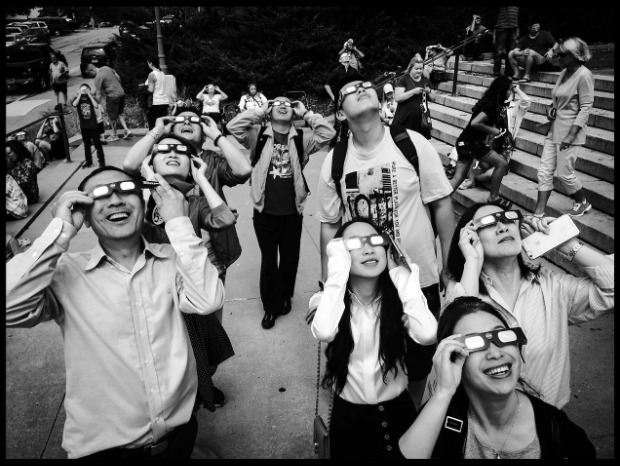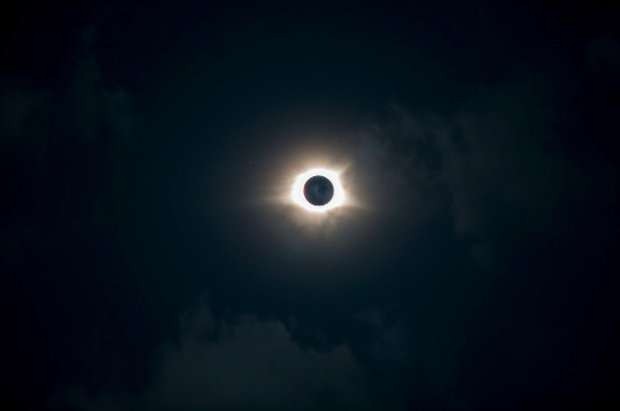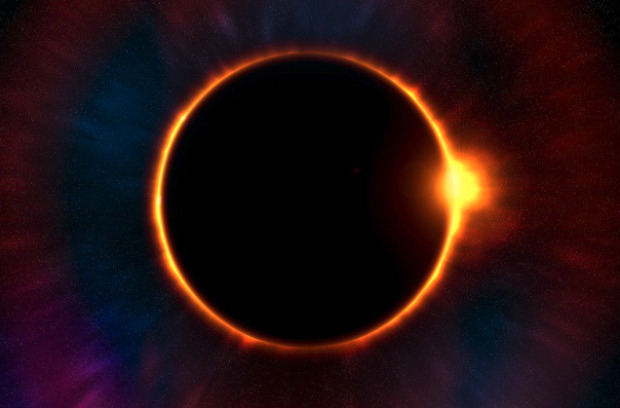Few things draw attention, like a solar eclipse. This phenomenon occurs when the moon travels between the Earth and the sun. As this happens, the moon creates a shadow on various parts of our planet. This shadow temporarily blocks the sun’s light, with its rays appearing blocked. This is also called an occultation. Long ago, some cultures thought disastrous events would accompany an occultation, but science now understands what causes these events. The next sun shadowing is an excellent opportunity to enjoy this fascinating natural phenomenon while learning more about astronomy. Understanding the sun’s occultation requires seeing it in person. People travel to regions where the sun is obscured for tremendous experiences. Here is what to do.
Take Time Off
When the sun is shadowed, the entire country experiences partial shadowing. However, totality occurs along a band known as the totality path, which spans a few US states. The totality path brings millions together for a fleeting moment of wonder. The states that may experience totality when the next occultation occurs are Texas, New York, Indiana, Kentucky, Ohio, Illinois, and others. Those in these states can observe totality, meaning those outside the totality path should travel to one of these regions to see an obscured sun. You should take time off work and prepare for the most memorable experience of viewing a shadow cast by the moon.
Consider Events Where the Full Sun Occultation Will Happen
Although the occultation event happens within two minutes in most spots, the partial obscuration before and after the totality event may take plenty of time. It is not a scientific event but a human one. You do not need to be an astrologist to enjoy the dimming of the sun; you don’t need to understand rocks to enjoy viewing the mountains. Sun shadowing is a natural wonder; therefore, hosting a party after it occurs would be an excellent idea.
Several people host public parties in museums, local community centers, observatories, open fields, or parks to mark this event. Some throw parties in their backyards. Choosing places where you can access facilities and shade is a brilliant idea. Also, check the weather forecast for the areas where you plan to view the moon’s shadow.
Solar parties have an obvious theme: the solar system. Therefore, find inspiration by looking into space. You can wear attires with crescents, stars, and circle decorations to appear simple. However, you can expand your imagination. You can have a projector focused on an image of the moon on your wall for a memorable backdrop. Glass balls or globes, often used as garden sculptures, can create an impressive space-themed masterpiece.
For science fiction enthusiasts, using your preferred characters or spaceships in the décor can inspire. Decorate the viewing area in various ways; don’t limit your creativity. Star-themed hair pins and fun hats can show what you love.
Prepare for an All-Day Event, So Bring Snacks and Water
With many people gathering in small areas, some may even stay up to a week; there might be a need for more basic supplies such as food. Small towns can only satisfy a few people. Prepare early for the day. Do some shopping and gather all the basic needs for your trip. Stock up a bit more in case you get stranded. This also applies to those viewing the moon’s shadow from their homes. Grocery stores and restaurants outside the totality path could experience sluggish demand.
You can stock up on foods like:
- Moon Pies: Whether homemade or store-bought, moon pies are ideal for any solar party.
- Ice Cream: Get freeze-dried ice cream to cool you down on a hot day. This chilled treat evokes the idea of space exploration, so having it at your solar infrared viewing event is perfect.
You can also stock up on foods that will last the day. Drinks can also be a pleasant way to celebrate Astronomy. You can include classic cocktails in your lunchbox. Blue Moon beer is a widely available drink with the most appropriate name for a moon-themed party.
View Safely
Don’t Look Directly at the Sun
Looking at an occultation without eye protection can cause eye damage and blindness. The sun’s rays cause permanent damage to vision by burning the eye’s light-sending tissue (retina), which is called sun-induced retinopathy. It is crucial to have proper protection if you plan to view a solar occultation. You can only look directly at the sun with special-purpose solar filters like handheld viewers or glasses. Know that ordinary sunglasses or homemade sun filters are unsafe. Using an unfiltered telescope, camera, or binoculars to look at the sun during the occultation is unsafe. There is no exception to this rule.
When the totality period arrives, it is safe to look directly at the sun; however, you must wear sun protection after seeing the sun’s corona. A totality phase lasts two minutes and some seconds (the longest it can last). Those not within the totality path will see a partially obscured image and must wear the right eye protection equipment.
Use Proper Solar Filters
Be sure to carry specially designed solar-viewing gear. You may also use a welder’s glass to view the moon’s shadow. Some manufacturers that have certified handheld solar viewers and glasses to meet international standards include American Paper Optics, Rainbow Symphony, TSE 17, and Thousand Oaks Optics.
Do not use damaged or scratched solar filters. To view astronomical obscurity via a camera lens, telescope, or binoculars, they must be fitted with the required solar filters. Consult an astrologist. Do not use handheld astronomical viewing equipment or sunglasses to look through binoculars, telescopes, or cameras; these devices concentrate the sun’s rays and may destroy the solar filter. The sun may damage your retina.
Use Pinhole Projection for Safe Viewing
You can still watch an occultation by making a pinhole projection. It is a convenient method where the sunlight penetrates through a small opening (such as an index card hole) and is projected onto nearby surfaces (such as a wall, another card, or the ground). Here is how to make a pinhole projector or camera:
You need:
- 2 sheets of white paper or white cardboard
- A needle, a sharp pin, or a thumbtack
What to do:
- To create a short version of the pinhole camera, make a tiny hole on the sheet of paper using a thumbtack or a pin. Make sure to create a smooth and round hole.
- Hold one piece of paper above your shoulder to allow the sun’s rays to shine on the paper (do not look at the sun directly; your back should be towards the sun).
- The second sheet of paper will be your screen. Hold it further from the paper with the hole to see an inverted sun image.
A box projector can still serve you similarly but requires extra items and construction steps. If you do not have any instruments, just put one hand over the other with fingers outstretched and slightly open. Face the ground, and look at your hands’ shadows. The spaces between your fingers will project small images onto the ground. If you use pinhole projection during the eclipse’s partial phases, these images will showcase the sun’s crescent shape. If your observing location has trees, look at the ground to see the leaves’ shadows. During the partial solar blockage, the spaces between the leaves act as pinhole projectors.
Photography Equipment
If you plan to capture the moment with a camera or smartphone, research the recommended techniques and equipment beforehand. You can record a video or take multiple images to choose a winning shot from them. Use solar filters designed for photography to protect your camera sensor and eyes while framing the shots. Remember that professionals took those stunning solar photos in magazines and documentaries with expensive gear and experience. Therefore, the best thing is to put the camera away and experience the viewing.
Things to Note
Notice That It Is Getting Cooler
During the period of totality, the moon completely covers the sun’s disk, and there might be a sudden temperature drop. According to the Gettysburg Republican Banner, on December 9, 1834, a 360-degree sunset effect caused the temperature to drop by 28 degrees Fahrenheit. In 2015, the Norwegian island of Svalbard experienced totality, dropping the temperature from 8 degrees Fahrenheit to -7 degrees Fahrenheit.
The change in temperature during the event varies based on the year’s season and location. The temperature change during totality is the same as the difference in temperature at noon and after sunset. However, the change will occur faster, which is why this is one of the noticeable changes caused by totality.
Listen to Sounds Produced By Birds, Insects, and Other Animals
Studies on the solar occultation of the sun have revealed that birds and animals behave unusually during totality. Animals begin their evening behaviors and songs as the sun begins to wane. Insects such as crickets that only come out at night will start appearing and may chip. Mosquitoes might look for food. As the sun shadowing ends, these insects will think morning is coming. They will retreat to their hiding places.
360-Degree Sunset
During totality, you’ll experience a 360-degree sunset effect. You’ll see the light outside the moon’s shadow as it blocks the sun. Those at the highest point for a 360-degree sunset will experience the longest totality period, two minutes and 39 seconds. In 2017, Bald Knob Mountain was the favored destination for the event’s enthusiasts. Apart from the sunset effect, solar viewers noticed a V-shaped shadow that moved in the sky.
Watch for the Moon’s Shadow
Before obscuration begins, use safe techniques to look at the moon’s shadow. You might not notice shadows during the first contact. But as the moon continues to cover the sun, which is partially obscured, you’ll notice a moon shadow that is not so deep. At the second contact, you’ll experience a deeper moon shadow. When the sun is completely hidden, you’ll see the complete moon’s shadow and the glory of the sun’s corona. Totality ends at third contact when the moon’s leading edge exposes the sun’s rays. At totality’s end, you won’t see a deep moon shadow.
Conclusion
The most significant thing to remember about a solar occultation is to protect your eyes. Although you might be persuaded to look at the sun directly, please do not do it. The sun’s UV rays can cause irreversible damage to your vision. The most effective way to view the partially obscured sun is to put on sun filters. Normal sunglasses won’t protect your eyes; they’re not meant to stare at the sun. Do not use smoked glass, old film, or a floppy disk as a filter; they offer no eye protection. The sun’s rays can penetrate the above equipment and damage your eyes. You could use a pinhole projector without wearing glasses. Purchase eye protection equipment rated for solar viewing by recognized laboratories.
Return to Blog Home
























